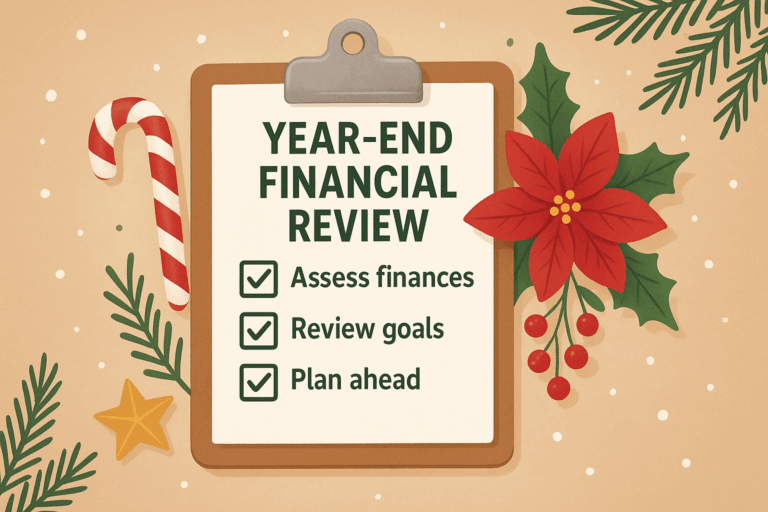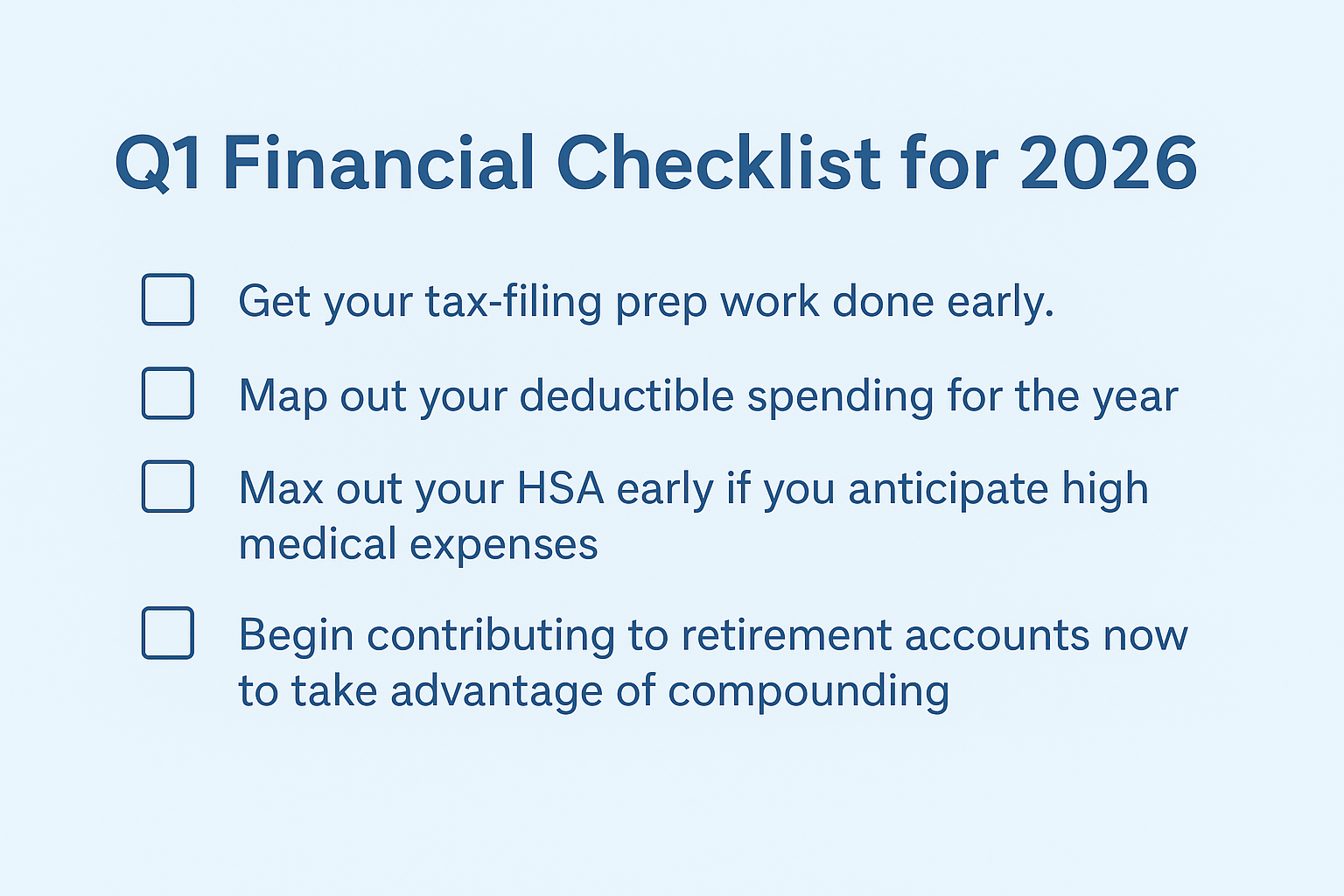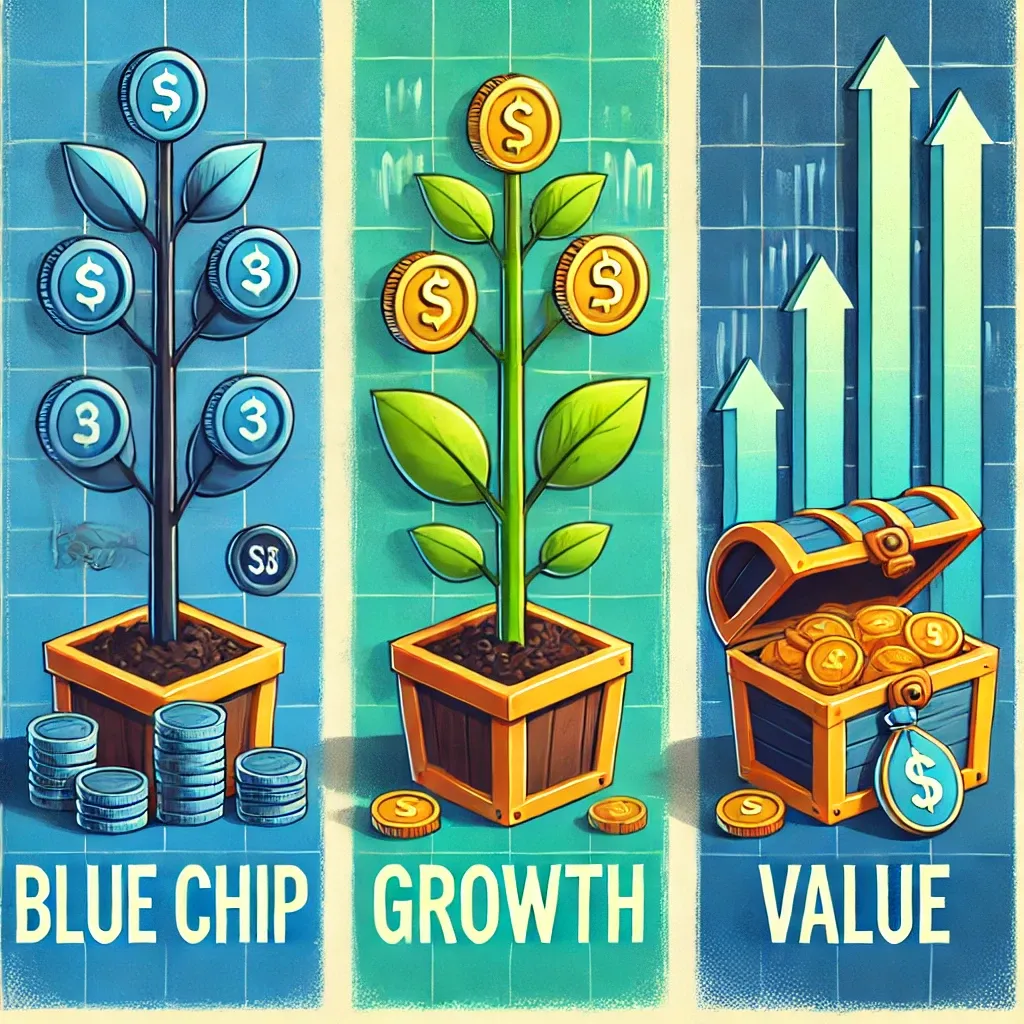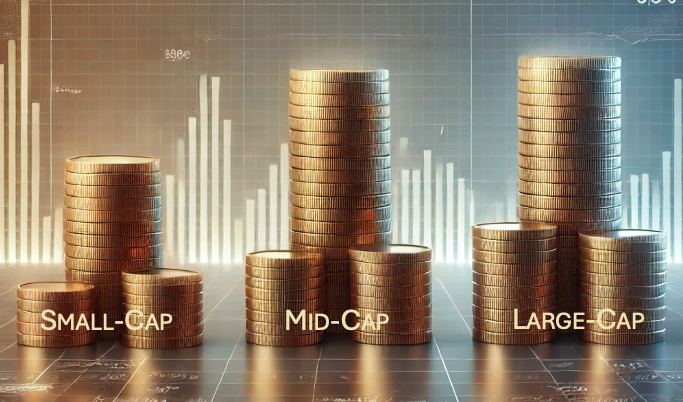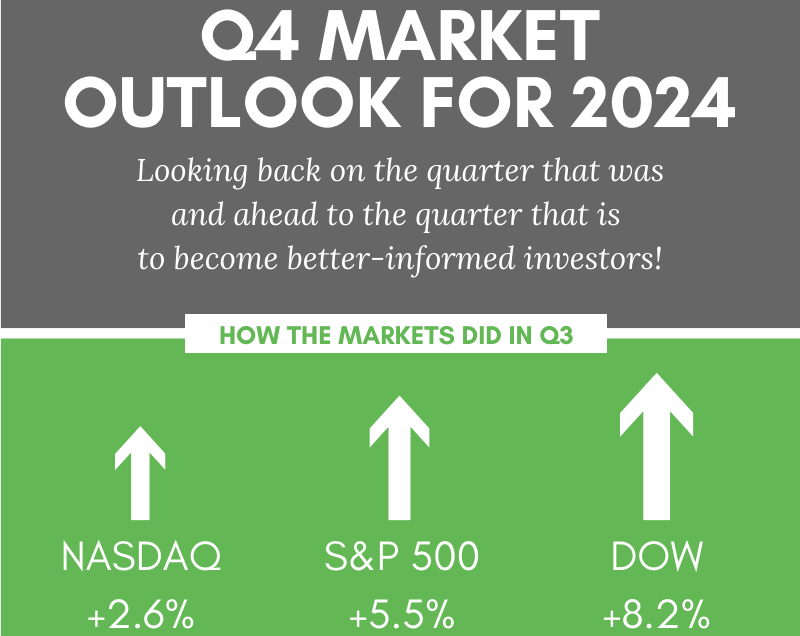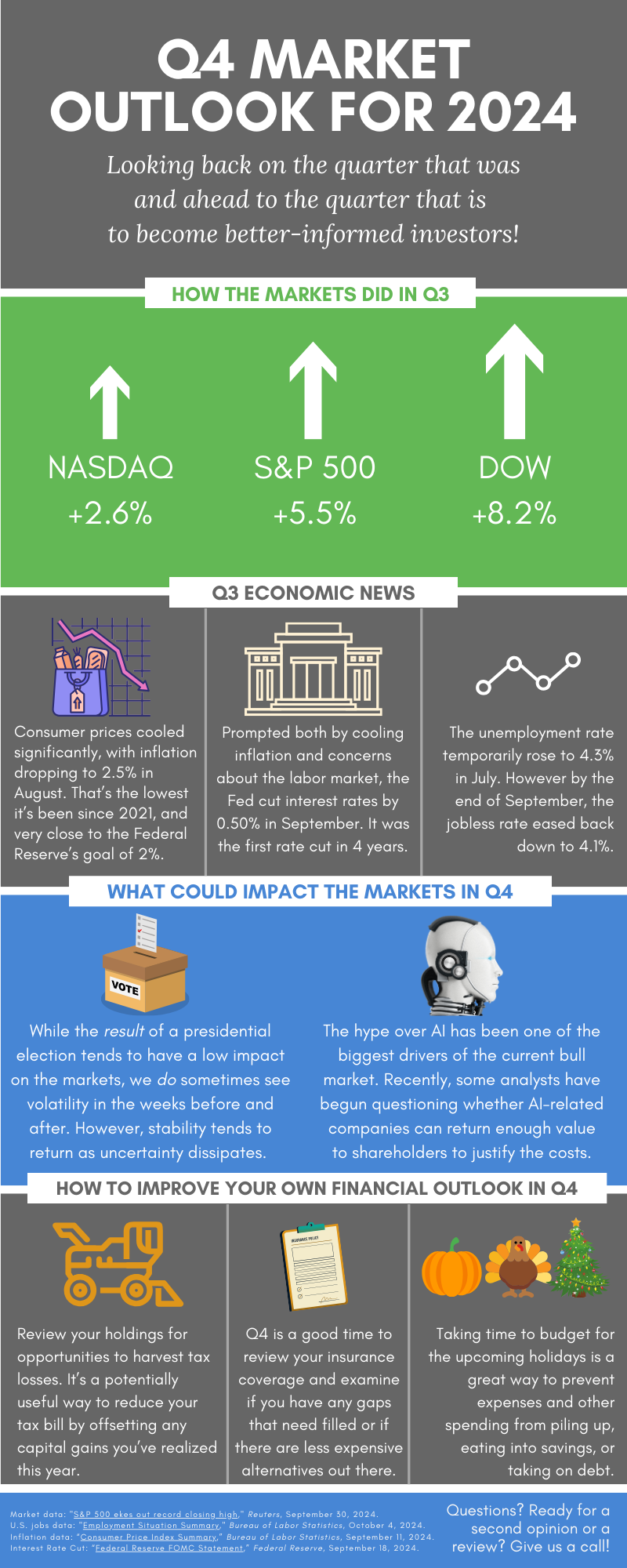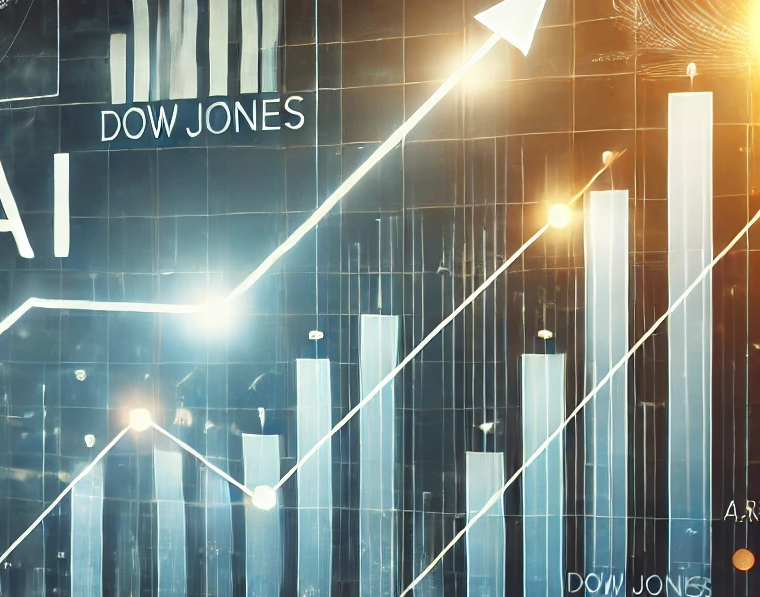Q1 Market Recap
“If you don’t like the weather, just wait a minute.” That’s a common refrain in many corners of the country. You can hear it near the Great Lakes, on the prairies and plains, and in the mountain west. But it probably originated in New England, where the weather can go from sunny to snowy and back again in a heartbeat. Especially in the spring.
It’s also a line we like to remember whenever we experience a turbulent quarter in the markets.
Volatility was really the only constant during the first three months of 2025. As a result, all three major indices finished down for the quarter. But it’s important to remember that “volatility” doesn’t just mean “down.” It means changing in a sharp and unpredictable manner. In Q1, the markets rarely went in the same direction for more than a couple days in a row. (If you don’t like the weather, just wait a minute.) They were in a continual state of flux, which in some ways is the hardest state for investors to deal with. The good news is that just how today’s performance doesn’t necessarily dictate tomorrow’s, how the markets did in Q1 doesn’t necessarily predict the same for Q2.
To understand where we are, it’s always helpful to understand where we’ve been. So, let’s do a quick recap of why markets performed the way they did in Q1. Then, we’d like to share why volatility is a feature, not a bug, of investing.
There were three main storylines for Q1: new developments in artificial intelligence, inflation, and most importantly, tariffs. Let’s start with:
Artificial Intelligence. As you know, the last two years have brought some stunning advances to the field of AI. There are now dozens of AI-related products, many designed to help companies become more productive and efficient. The more productive and efficient a company is, the more valuable it is to shareholders. As a result, the recent bull market has largely been driven by money flowing into tech companies participating in the AI boom.
But in January, a Chinese company known as DeepSeek revealed a new AI model meant to rival well-known services like ChatGPT. Because the company claims to have developed its AI with far less money and computing power, many chipmakers and AI companies have seen their share prices fluctuate dramatically in recent weeks. (If you don’t like the weather, just wait a minute.) So, just as those same companies were responsible for much of the market’s rise, so too are they responsible for some of the market’s recent slides.
Many of these companies are also being affected by the second storyline:
Tariffs. Over the past two months, President Trump has repeatedly announced and then often suspended tariffs on China, Canada, Mexico, and other countries across the globe. As of this writing, a 20% blanket tariff on all Chinese goods has actually been enacted, along with a 25% tariff on steel and aluminum imports from any country. Certain products from Canada and Mexico have tariffs, too. Dozens of other tariffs, though, have been either dropped, delayed, or merely proposed.1
The situation seems to change on a weekly basis. (If you don’t like the weather, just wait a minute.) It’s this unpredictability, more than anything else, that has the markets spooked. You see, tariffs make it more expensive for companies to import the supplies they need to create their own products. (For example, a tariff on imported computer chips and semiconductors impacts many tech companies that depend on those things to power the technologies they create.) But when investors aren’t certain exactly which companies will be affected, or when, or by how much, it creates massive uncertainty. And uncertainty is nearly always the chief cause of market volatility.
Tariffs also play a role in the third and final storyline, because they have the potential to cause:
Inflation. While inflation isn’t quite the same storyline it was last year, it’s still in the background, affecting almost everything around it. That’s because, after falling to 2.4% in September, the inflation rate steadily crept back up to 3% in January.2 (It then ticked down to 2.8% in February.)
Why does this matter? Because as long as inflation remains “sticky,” the Federal Reserve is likely to keep interest rates elevated. Higher rates act like ankle weights on stock prices, and investors have been waiting for years to see them decline. When the markets move by a larger-than-normal amount in a single day, it’s often because investors are rethinking what they expect the Fed will do with interest rates.
So, these are some of the prime causes behind all the volatility we’ve been seeing. And because all three are interconnected, the uncertainty each one creates is compounded by the others.
Make no mistake, volatility can be frustrating. As frustrating as a spring snowstorm when you were hoping for sun. Despite this, volatility can also be a positive — because it creates opportunity.
Here’s an example of what we mean. You remember how we said the phrase “If you don’t like the weather, just wait a minute” probably originated in New England? While he didn’t use those exact words, the famous author Mark Twain once alluded to them in a famous speech he gave to the New England Society in 1876.3 Here are a few excerpts of what he said:
“Gentlemen: I reverently believe that the Maker who made us all makes everything in New England — but the weather. In the spring I have counted one hundred and thirty-six different kinds of weather inside of four and twenty hours. I could speak volumes about the inhuman perversity of the New England weather. There is only one thing certain about it: You are certain there is going to be plenty of weather.
But…there are at least one of two things about that weather which we residents would not like to part with. If we hadn’t our bewitching autumn foliage, we should still have to credit the weather with one feature which compensates for all its bullying vagaries: The ice storm. When a leafless tree is clothed with ice from the bottom to the top — ice that is as bright and clear as crystal; when every bough and twig is strung with ice beads, frozen dewdrops, and the whole tree sparkles cold and white like [a] diamond plume. Then the wind waves the branches, and the sun comes out and turns all those myriads of beads and drops to prisms that glow and burn and flash with all manner of colored fires. The tree becomes a spraying fountain, a very explosion of dazzling jewels, and it stands there, the supremist possibility in art or nature, of bewildering, intoxicating, intolerable magnificence!
Month after month I lay up my hate and grudge against the New England weather, but when the ice storm comes at last, I say: “There, I forgive you now. The books are square between us. You don’t owe me a cent. Your little faults and foibles count for nothing; you are the most enchanting weather in the world!”
In other words, all the frustrating unpredictability — or volatility — of the New England weather was worth it to Twain…because it gave him the sublime sight of a tree after an ice storm.
While it’s not so poetic, something similar is true about the markets. All the frustrating volatility is worth it to investors, because when the dust settles, it shows us which companies are truly strong. It’s that same volatility that gives us the opportunity to own those companies at lower prices. It’s that volatility that gives us the chance to be patient when others are restless. Without volatility, we wouldn’t have experienced the rallies that followed afterward.
Of course, if you ever have any questions or concerns about the markets, that’s what we’re here for. Please let us know if you would ever like to chat. But in the meantime, remember this: While no one can say when the current market conditions will change, we do know that they will. The storylines of tomorrow will be different than the ones of today.
Sometimes, all we have to do is just wait a minute.
1 “See all the tariffs Trump has enacted, threatened and canceled,” The Washington Post, March 27, 2025. https://www.washingtonpost.com/business/interactive/2025/trump-tariffs-enacted-effect-threatened/
2 “12-month percentage change, Consumer Price Index, selected categories,” U.S. Bureau of Labor Statistics, https://www.bls.gov/charts/consumer-price-index/consumer-price-index-by-category-line-chart.htm
3 “Speech to the New England Society,” The Letters of Mark Twain, https://www.marktwainproject.org/letters/supplementary/mtdp00229/




